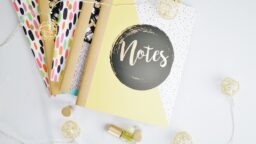You’re sitting in class, completely engaged. While in the midst of lecture, everything makes sense. It’s all clicking. But the next morning, when you go back to look at your notes, all you see is a jumbled mess.
Good note-taking is key to success in college. No matter how well you pay attention in class, if you don’t have a photographic memory, chances are you’ll need your notes to refresh your mind before that exam, quiz or writing assignment.
To give you a few ideas on how to boost your note-taking abilities, we at The University Network (TUN) reached out to some study and education influencers on Instagram. Their advice, listed below, just might help you raise that GPA.
Jasmine

- Instagram handle: @studyquill
- Location: USA
Jasmine, a graduating high school senior, is heading to UCLA in the fall to kick off her college career. Despite being an incoming freshman, Jasmine already has note-taking and studying down to a science, which is clear if you check out her Instagram and YouTube, both called studyquill. On Instagram, her images, which are neat and aesthetically pleasing, highlight her skillful and organized bullet journaling techniques. Underneath those images are bright, engaging and informative captions.
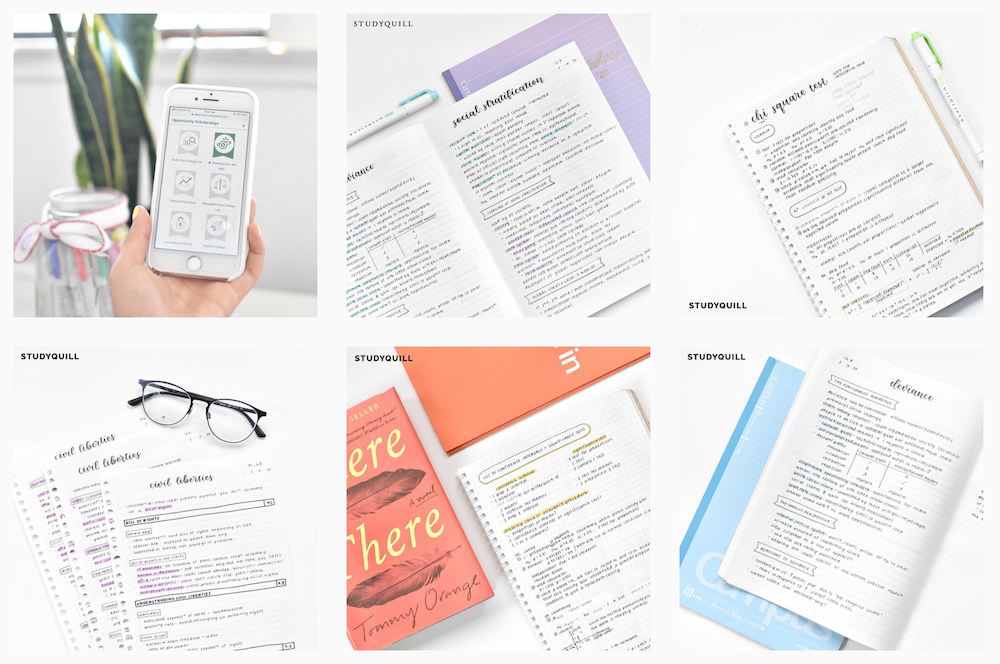
To stay organized throughout her life and in her studies, Jasmine practices bullet journaling. It’s a customizable DIY technique that includes using a blank-page notebook to artistically organize your notes and daily tasks.
“The main purpose of bullet journaling is that it is a completely customizable system that you design yourself,” says Jasmine. “So you decide how many pages you want to take up in your notes or what type of time frame you want your planner to be based around. It’s all up to you. And that’s the main benefit of this system. You get to decide it yourself.”
In recent years, bullet journaling has grown in popularity and has gained significant attention on social media sites, where users show their followers their various techniques and practices.
“You can get all of this inspiration from all of the content you see on the internet and that you might find from your friends who also bullet journal,” says Jasmine. “You can take that and implement it into your own planning or note-taking routine. The beauty of the bullet journal system is that if something doesn’t work for you, you can just change it. So once you take in that inspiration and try it out for yourself, you can modify and get rid of what doesn’t work and add in new things that you think would help. Overall, just work towards a system that works best with your thinking or planning.”
Kuro
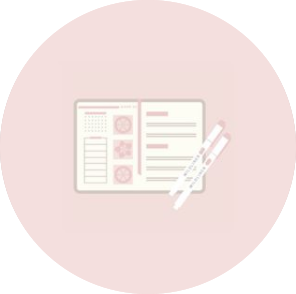
- Instagram handle: @kuroristudies
- Location: USA
By the looks of her Instagram posts, Kuro, an aspiring medical researcher and current college student in the United States, could seemingly teach a course in calligraphy. Her Instagram images regularly feature her minimalist and organized notes, which fall beneath a bright, cursive heading. If you look next to those notes, you’ll likely see the pens she wrote them with. Through her captions, which are typically only one or two sentences long, she often gives you a brief glimpse into her personality and interests.
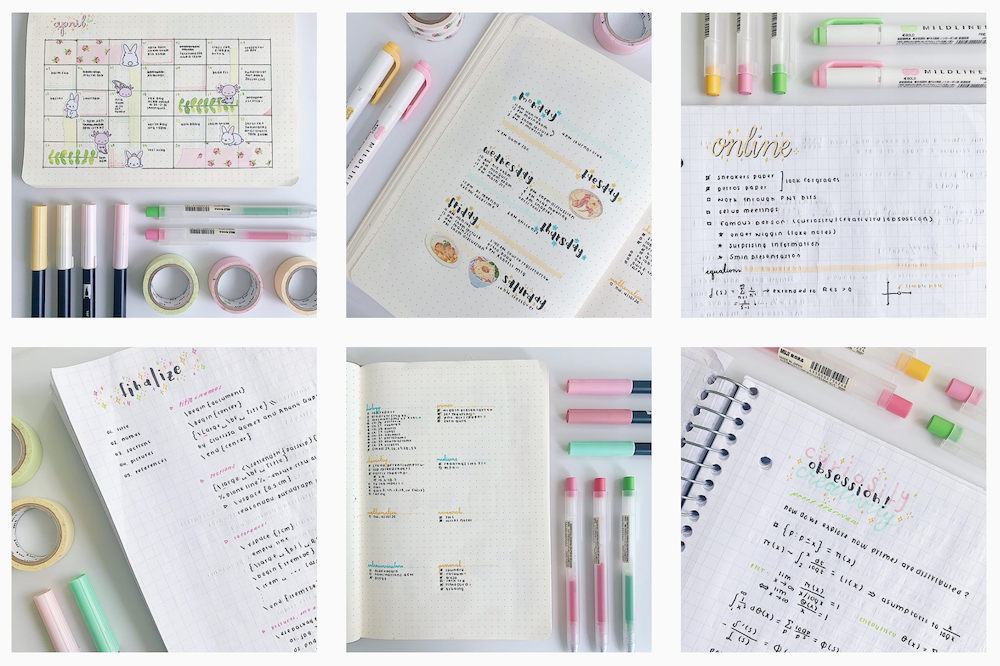
Occasionally, if Kuro has a particularly fast-moving class, she will review the course material scheduled for that day before class starts and jot down some notes. That way, she can just add any relevant information she hears in the lecture.
But, most of the time, she simply waits until class time and takes notes when the professor starts lecturing. She’s only able to do that effectively, though, because she’s continuously practiced handwriting.
“The best advice I can give on being more effective as a note-taker is consciously working on writing quickly and legibly by hand,” Kuro says. “This way, you can get all the relevant information down without losing the benefits of writing notes by hand. I also like to highlight important sections/vocabulary so that the lesson’s structure and important points stand out when I study.”
Megan

- Instagram handle: @megansstudies
- Location: USA
Megan, a pre-med student at the University of Texas at Austin, takes a positive, uplifting approach to studying and note-taking. Next to the laptop and notebooks that she often features on her Instagram images sits the occasional drink, snack or even stuffed animal. Her captions, which are often long enough to be considered blog posts, are engaging, encouraging and informative.
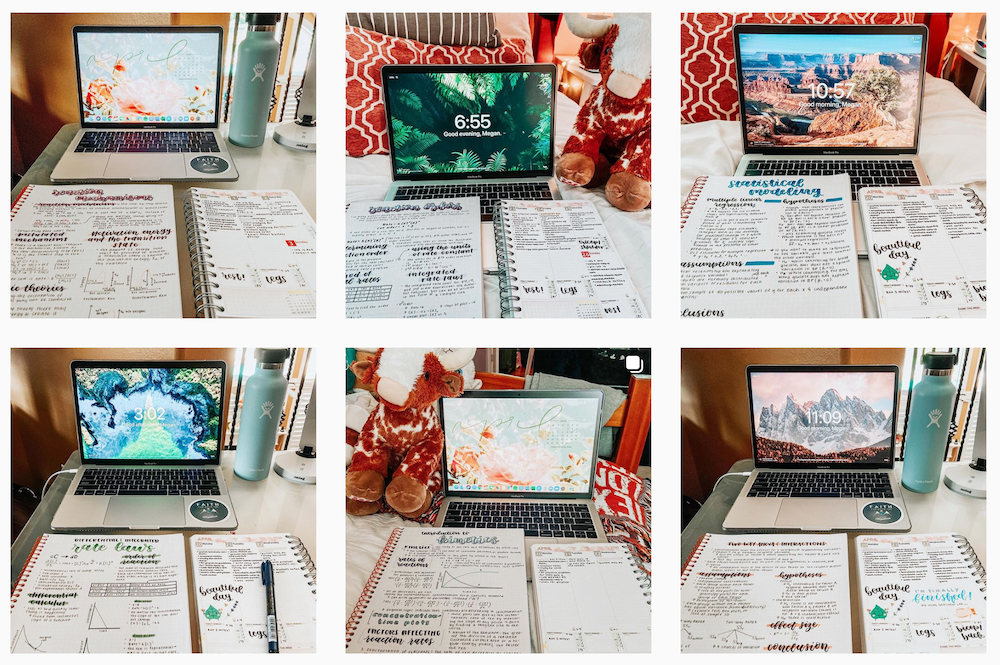
Off the bat, Megan admits to still struggling with note-taking from time to time, which is a reassuring sign that everyone has room to improve. Through trial and error, through, Megan has determined that her most effective strategy involves condensing her notes to one page. She tries to keep it to one side of the page, but the back can be utilized too.
“This forces you to think of what is most important to include because, well, if it’s important enough, then you will want to include it in the one-pager,” says Megan.
This method may not work for everyone, she adds, but it works for her because she’s a visual learner. Oftentimes, she includes diagrams and other graphics. That way her notes are organized and more inviting.
Sarah

- Instagram handle: @sicistudies
- Location: Canada
Sarah just finished up her health science and psychology undergraduate degree, and is headed to the University of Ottawa in September to study law! Like her note-taking and study habits, the images she posts on Instagram are organized, reliable and patterned. Sarah’s engaging captions, however, bring out some of her personality.
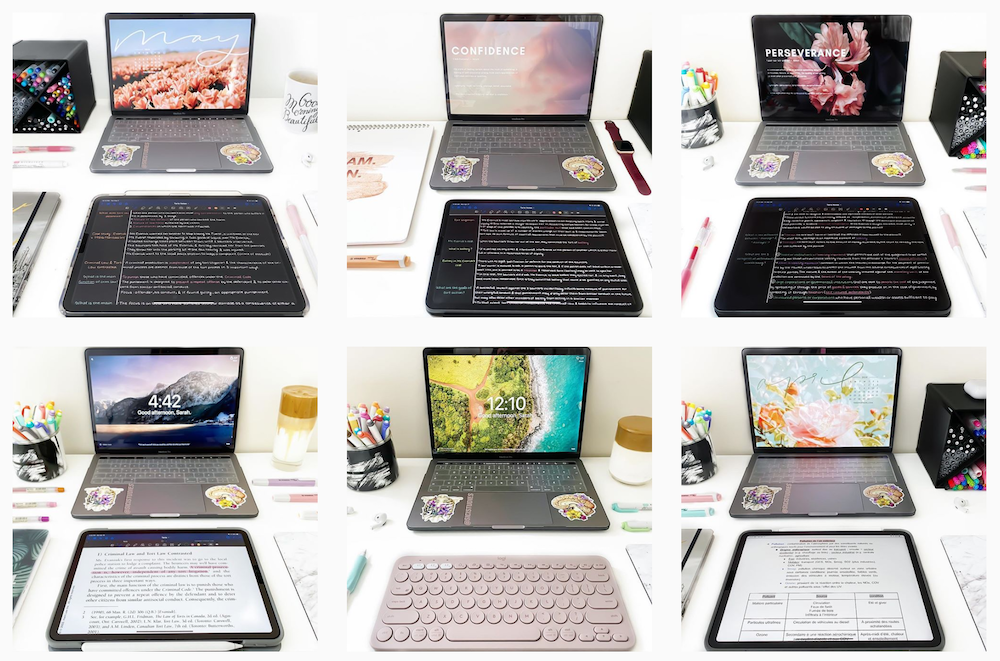
According to Sarah, the key to being an effective note-taker is starting early. Throughout her undergraduate career, she says she would always try to be one week ahead on her school work.
“For readings, I would read a full paragraph or page without taking notes and then I ask myself, ‘What’s the main idea here? And I would write that in my reading notes,” Sarah says. “I would also pre-read the presentations my profs put out before the class so that I would be familiar with the concepts, and so that I could really listen in class for additional information and not waste time trying to type everything he says since I will already have basic knowledge.”
After class, Sarah says she would always review the new material as soon as possible. At most, she would wait two days. From there, she would create an Anki flashcard deck and draw out diagrams or mind maps for the more difficult topics.
Esther

- Instagram handle: @esteebeestudies
- Location: UK
Esther, a pharmacy student in Norwich, UK, takes a formulaic approach to studying and note-taking. The images she posts to Instagram often include four things: her laptops, a tablet, some paper to write on and her study partner, a little orange toy. Her captions are engaging and often pose questions like “What was your dream career when you were young?”
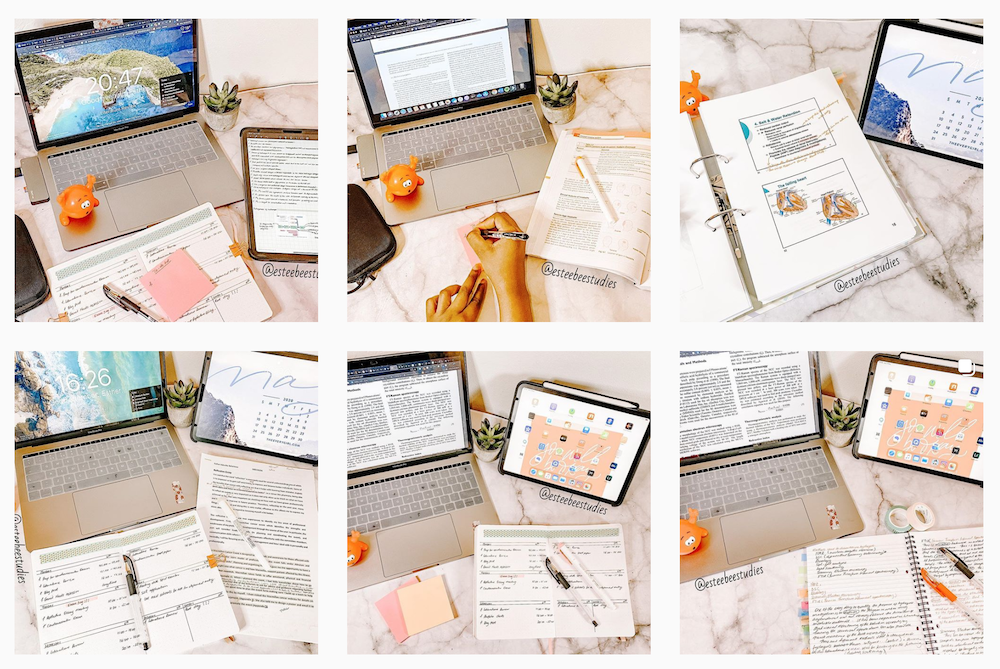
Esther practices clear and concise note-taking. And to help you do the same, she has a few tips.
First, she suggests always annotating your lecture slides, if your professors provide them. That way, you can add only what’s necessary and not waste time by writing down what’s already available to you.
“The lecturers will always say something that will stand out,” says Esther.
Second, Esther suggests summarizing your notes on a separate piece of paper or document. You’ll thank yourself for it come exam time.
And lastly, Esther recommends recording every lecture so that you can listen back and jot down anything you missed in class. It’s important, though, to check with your professor before recording, as different professors have different policies on this.
Yunna

- Instagram handle: @yunnastudies
- Location: Canada
Yunna, a first-year university student, has seemingly found a home for herself in college. Her Instagram images, consisting of sideways notebooks and the occasional Starbucks coffee, are a refreshing reminder that there are many ways to be a productive student. Those sideways notebooks are, however, supplemented with extremely organized and colorful notes.
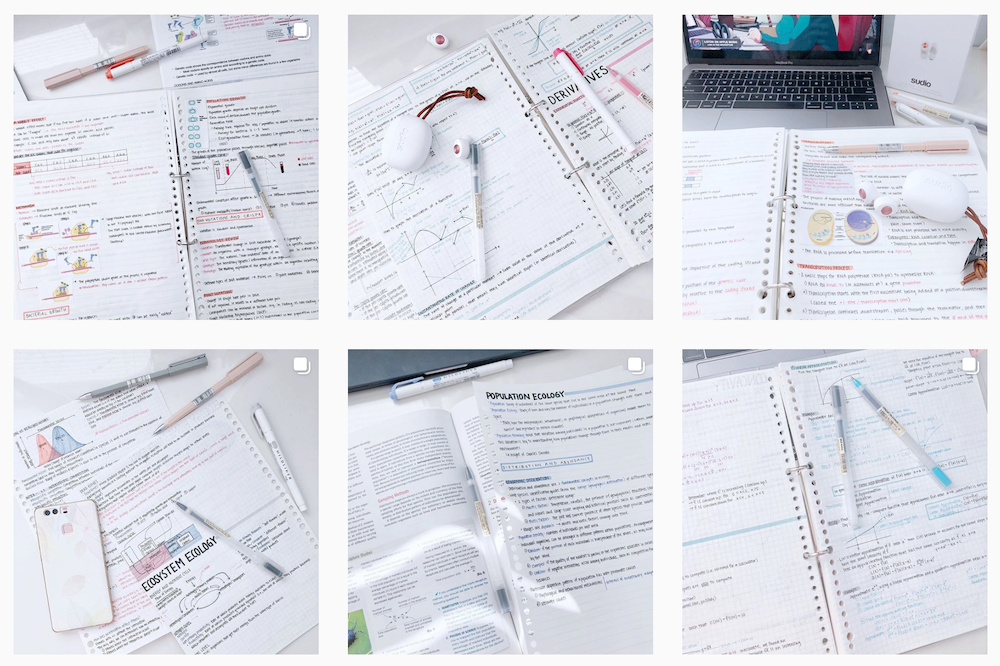
To best retain information, Yunna takes very few notes while she’s physically in class. Her professors, like many do nowadays, post their slides after every lecture. So most of her attention, while in class, is focused on developing an understanding of the concepts her professors are explaining. She only jots down notes when she finds something to be very important.
“You can avoid wasting time writing points down that are already written on the slides or in the textbook,” Yunna says. “After each lecture, I would write down some key ideas from the lecture slides in my notebook. It is important that you do this the day of your lecture because it will help you review your class notes.”
Sarah

- Instagram handle: @study.sarah
- Location: Australia
Sarah, a law and science student in Sydney, Australia, takes a calm, organized approach to note-taking and studying. Her Instagram images are, quite literally, full of life. They often feature plants, both on her desk and through her window view to the outside. Occasionally, her study partner, a friendly black cat named Luna, will make an appearance. While her captions nearly always relate to school work, she tries to keep things light by posing engaging questions like “What’s your go-to brain food?”
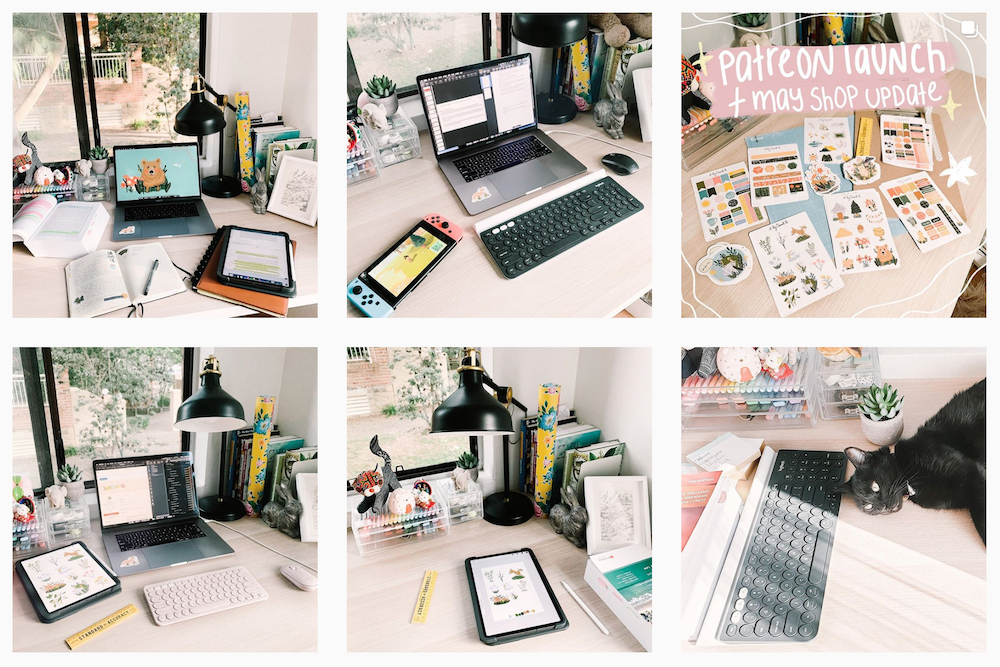
Sarah spends less of her energy worrying about actively taking effective notes while in class and focuses more on, after class, organizing her notes into a digestible format.
“I think It’s just important to capture the notes in some way, any way, that you can process later,” Sarah says.
How she breaks down and summarizes her notes, however, varies slightly based on the subject matter.
“For law, I turn my captured notes into an outline with a contents page as my exams tend to be open book, and I find it easier to refer to the relevant notes this way,” Sarah says. “For my science classes, I tend to summarise my notes by turning them into concept maps as these exams are closed books and I find it easier to remember the concept map visually.
Grace

- Instagram handle: @intellectys
- Location: Spain
Grace, a third-year college student studying history and Spanish, makes the most out of note-taking and studying. By the looks of her Instagram, she turns what, for some, is a miserable process into something fun and bright. The images she posts are full of color and often feature a houseplant, one of which she recently named Milo. The captions she writes are personable and light. Occasionally, she’ll even include a book recommendation.
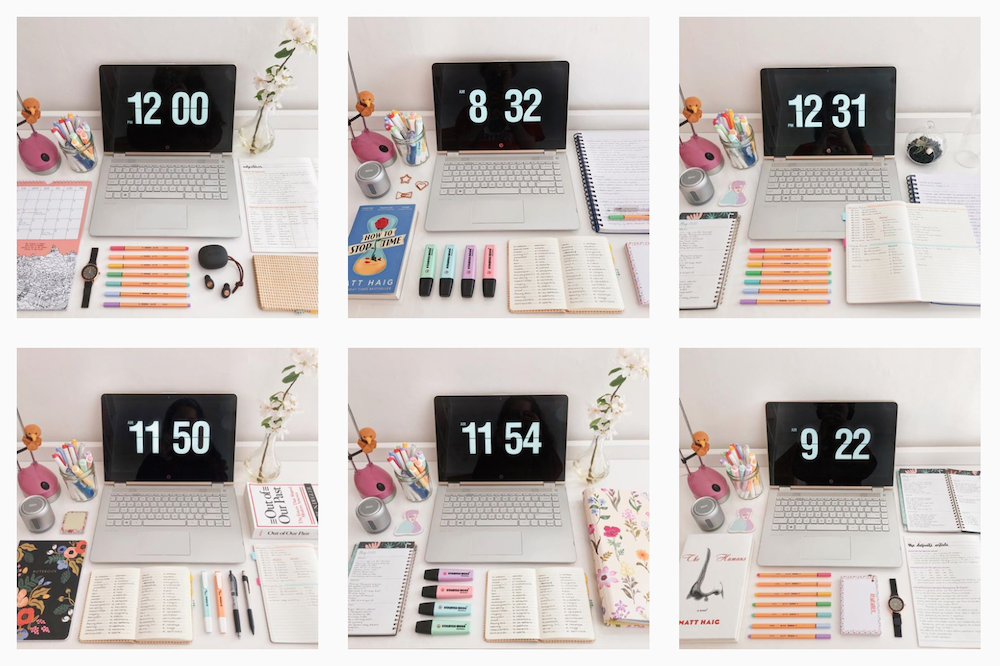
Grace considers herself to be a traditional note-taker, as her preferred method is bullet points on paper! But, there are a couple of techniques she uses that separate her from the masses.
“I only use one color per class — usually a matching pen and highlighter, alongside a black ballpoint for the bulk of the content — to avoid getting distracted by how my notes look,” Grace says.
She also records her lectures, which she recommends everyone does if professors allow it. This, she says, helps her focus on the most relevant points instead of getting caught up in the details of a lecture.
“Doing this has helped me focus on the important content, because I know that if I miss anything vital, or I want to refer back to a point in more detail, it’s still accessible,” Grace says.
Conclusion
Note-taking, which, at times, can seem menial and insignificant, is truly a vital piece to success in college. It’s the backbone of all your study efforts. Without good notes to review, there’s no effective way to fully prepare for a quiz, exam or paper.
Becoming a successful note-taker won’t happen overnight, as it takes time to understand how you best consume and retain information. But if you take some of the advice laid out in this article, you’ll be well on your way.

